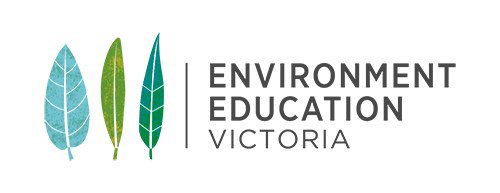More trees for a cooler greener west:
Classroom Resources
Resources about Biodiversity
Planting Seeds BnB Hwy
A habitat regeneration project focussed on pollinators. Planting seeds run incursions that use your school grounds as the learning space.
CSIRO’s Biodiversity Book
Biodiversity: Science and Solutions for Australia provides the latest scientific knowledge on Australia’s biodiversity. The book describes the unique features of Australia’s species and focuses on solutions for the future. Available for free download in multiple formats.
Biodiversity of the Western Volcanic Plains is an online curriculum program for primary and secondary students run by EcoLinc
Grassland Food Webs
An online food web activity developed by EcoLinc. Suitable for learning about local Western Plains ecosystems.
Friends of the Helmeted Honeyeater have excursion and incursion programs for schools. They also have a case study resource for VCE Environmental Science Curriculum.
Resources about Climate Change
ABC Documentary Big Weather: How hot is your school?
Fantastic ‘edutainment’ program showing the impact of heat on student learning.
Climate Change Interactive Atlas
Intergovernmental Panel on Climate Change. Explore observed and projected climate change information. For older students.
Climate Change Trends and Extremes.
Lots of data and graphs from the Australian Government, Bureau of Meteorology. Great for mathematical analysis.
The Climate Game
Interactive online game developed by the US based Financial Times. A fun and engaging way to learn about the complexity of Climate policy.
Water, Carbon and Nitrogen Cycles
BBC Bitesize: Information, animations and multiple choice online test
Citizen Science Resources
Frog Census
Get involved in Melbourne Water's community frog monitoring program, and collect data to help manage frog populations and raise awareness of waterway health issues.
iNaturalist
One of the best known Apps for helping to identify plants and animals and log their sightings. The data is checked by scientists and contributes to the Atlas of Living Australia. A great way to involve your students in Citizen Science.
Waterbugs Census
A Melbourne Water program with instructions and resources for freshwater sampling of macro-invertebrates.
ResourceSmart Schools
Check out the EEV program for logging a Biodiversity Audit of your school for ResourceSmart Schools.
Life on Our PlaneT
Overview: A broadcaster recounts his life, and the evolutionary history of life on Earth, to grieve the loss of wild places and offer a vision for the future.
Available on Netflix.
How do trees help us adapt to climate change?
In urban areas, trees shade paved areas from the sun, preventing them from heating up during the day. Without trees, these surfaces can reach temperatures in excess of 50 degrees. This heat is then released at night and creates an Urban Heat Island Effect, commonly seen in cities.
Trees also pump moisture into the air through Evapotranspiration, which further cools surrounding areas.
In addition to making humans more comfortable, trees provide habitat for birds, insects and some mammals. This can provide opportunities for students to connect with nature, which is great for their wellbeing, and also to learn through observing natural systems.
This project is supported by the Victorian government through the “More trees for a cooler greener west” program.
Helping schools prepare for Climate Change through increasing urban tree cover.


